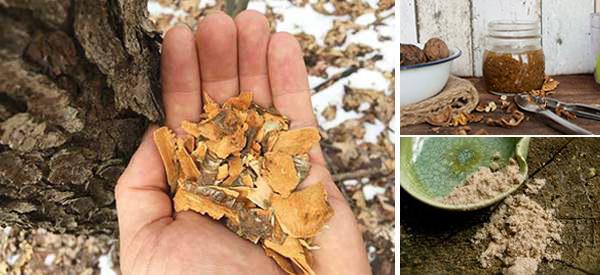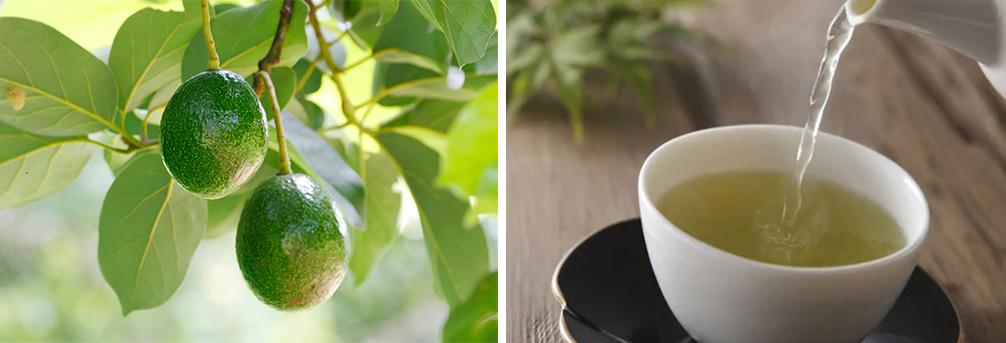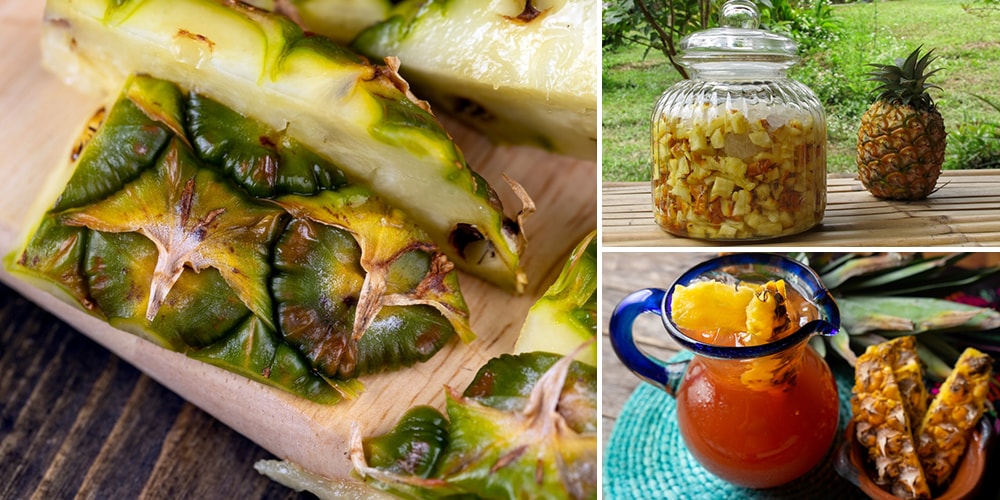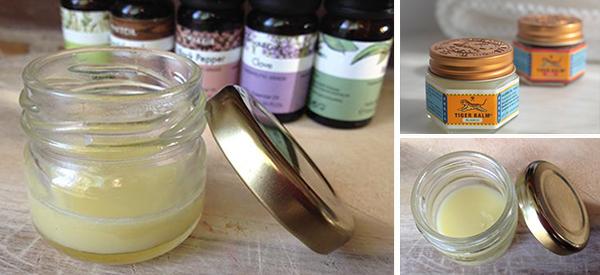
25 Little Known Medicinal Uses for Tree Bark
Trees are everywhere, but they’re rarely considered useful apart from providing building and fire materials. Did you know that bark provided by trees can also be a survival item? Let’s take a look at some of the great uses for tree bark in a survival situation.
1. Beech Tea for Lung Problems
Make a tea from the beech tree bark by adding the shredded bark to boiling water for 10 minutes. Use roughly a quarter cup of beech bark per cup of water. It is traditionally used to help with any type of lung issue, including tuberculosis.
2. Apply Linden Bark to Burns
Burned yourself on the campfire? Not to worry, you can use linden bark to relieve the pain. Peel fresh bark and then apply directly to the burned skin. This may help it from blistering and can also boost the healing rate.

3. Birch Bark for Treating Skin Issues
If you’re dealing with skin problems like eczema or psoriasis, you can add two to three cups of shredded bark (as well as twigs) to a gallon of boiling water and simmer for 10 minutes. Strain the mixture and add it to a bath. Soak for at least 15 minutes. This can be repeated every few days.
4. Elder Root to Ease Headaches
The bark from elder tree roots can be brewed into a tea that works well for treating headaches. Add a handful of bark taken from the roots and add to a cup of boiling water. Steep for 6-7 minutes, then sip it to ease a headache. It can also help with congestion.
5. Beech Bark to Heal Poison Ivy
Have you had a run-in with poison ivy? While the rash may be terribly uncomfortable, you can alleviate the problem if there’s a beech tree nearby. Make a tea from beech bark and use it to splash on the rash caused by the poison ivy.

6. Slippery Elm Poultices for Ulcers
The inner bark of slippery elm is excellent for treating ulcers or bringing infections to the surface. Mash the inner bark into a paste and apply to the ulcer. Alternatively, you can dry the inner bark and powder it, then mix a small amount with water to form a paste.
7. Apple Bark to Reduce Fever
Peel the root of an apple tree and steep in boiling water or make it into a tincture to help relieve fever. Be careful not to kill the roots of the tree . . . you should aim to peel only part of single root from the tree.
8. Willow Bark as a Painkiller
Willow bark contains salicin, which is a painkiller. As nature’s aspirin, you can use it in a tea or create a tincture to take when you have a headache. Any willow may be used, but white and black willows are most helpful.

9. Alder as a Wound Wash
Alder bark is an astringent and can be turned into a tea by boiling water and steeping a handful of shredded bark for 10 minutes. Cool the tea and use to rinse out scrapes and cuts. As an added bonus, it also helps close wounds.
10. Hazel Bark Poultices to Reduce Ulcers
Traditionally, bark from the hazel tree can be used in a poultice for ulcers. If you’re suffering from sores on your feet and having difficulty walking on a hike, try mashing up some bark from a hazel tree and applying it to the sores. It will help reduce them.
11. Slippery Elm Bark Powder for Treating Intestinal Issues
Do you have diarrhea or other bowel problems? If you have issues with your gastrointestinal tract, you can go ahead and mix dried, powdered slippery elm bark with just enough water to make a smooth mixture. Take a spoonful to treat bowel troubles.

12. Pine to Improve Circulation and Muscle Aches
Pine needles are commonly known as a cure for scurvy, but the bark is also useful. The areas around knots are particularly good since they tend to have a buildup of resin. Boil several pieces of bark in a gallon of water for 10 minutes. Cool the water slightly and add it to your bath. Soak for at least 15 minutes for the best results.
13. Balsam Bark for Toothaches
Have a sore tooth? Cut several shallow lines in the bark of a balsam birch and collect the resin that will ooze out. This can be applied to teeth and gums that are causing problems.
14. Speed Up Healing with Walnut Bark
Dry walnut bark when you first collect it, then pound into a powder. This can be mixed with just enough water to create a thick paste and then applied to wounds and sore joints to help them heal faster.

15. Magnolia Bark Helps You Sleep
Magnolia bark may be dried and ground. Add the powder to gel caps to make it easier to take and you can take a couple a day. However, many people prefer to simply make some tea with the bark. You should always harvest your own to avoid contamination.
16. Purify Your Blood with Sycamore Bark Tea
Make a simple tea from the inner bark of the sycamore tree. Add a handful of shredded bark to a cup of boiling water and steep for 5 minutes. This can be taken as a diuretic and blood purifier. It was often used to treat tuberculosis and measles, among other things.
17. Black Cherry Bark for Fighting Coughs
Dealing with an unpleasant cough due to a virus? Wild cherry bark has traditionally been used to treat lung problems like colds, bronchitis, and whooping cough. You can create a cough syrup by distilling the liquid created by steeping the bark and adding honey. Give a spoonful to treat a bad cough.

18. Rubber Trees Treat Fungal Infections
You can use the bark of the rubber tree for a variety of uses, but one particularly helpful one is to apply the scored bark to any fungal infection on the body. From ringworm to toenail fungus, the latex from the bark will attack the fungus. Replace as needed with fresh bark.
19. Poplar Bark to Heal Burns
The bark from any poplar tree may be used to treat a burn. Simply peel off the outer bark and apply the softer inner bark to the burn. This should be done while the bark is still damp. It will help dampen the pain and speed healing.
20. Use Cinnamon to Calm the GI Tract
Cinnamon is actually from the bark of a cinnamon tree and while it’s tasty in food, you’ll also find it helpful as a medicinal herb. Steep a couple of sticks of cinnamon in boiling water for 10 minutes and drink, or grind it and place in capsules to help with stomach upsets and gas.

21. White Oak Tea as an Antiseptic
Turn the bark of white oak into a tea by boiling a cup of water with a handful of shredded bark. This tea is then cooled and used to clean wounds or skin. It can also be used warm to soak infected toes.
22. Jacaranda Root Infusion Treats Sore Throats
Trim the bark from the roots of a jacaranda tree and soak the bark for 10-12 hours in enough water to cover. Throw away the bark and rinse the mouth and gargle with the infusion several times a day to help with sore throats and canker sores.
23. Treat Dysentery with Avocado Bark
If traveler’s diarrhea has hit while you’re on the road, find some avocado trees and trim some bark from them. You can then make tea from the bark, using about an oz. in a cup of water and steeping for 10 minutes. Drink the tea to help ease diarrhea.

24. Ease Cold Symptoms with Spruce Bark
Trim away the outer bark of the spruce tree to get to the tender white bark on the inside. This may be chewed n and the juices swallowed to help relieve cold symptoms.
25. Oak to Prevent Worms
Intestinal parasites can happen anywhere in the world and there are plenty of natural treatments for them. An oz. of oak bark boiling in a cup of water is one of them. Cool the concoction and drink it to eliminate any parasites.
Medicinal plants aren’t always herbs. Sometimes, we get even more powerful treatments from trees themselves. The next time you walk through the forest, take a closer look at the bark around you. It may be just what you need.
10 Trees Everyone Should Know and Why
How to Make Bark Bread from a Tree that Grows on Almost Every Street in America (Video)
21 Wild Edibles You Can Find in Urban Areas










I would like to know what trees, bark, roots, leaves, fruits, and plants in the Wisconsin and Minnesota area have medical use and are eatable. With photos to identify each. or a book to be purchased.
Love it it is so useful, and good too know when times are tough
Hi Wade,
Thank you for your feedback.
I am glad to hear that you find our article useful!
God bless!
Dear Nicole, I am grateful for your book as it has been extremely helpful, not only to myself and family but to friends of mine whom I have suggested different herbs for different things. My Identification of different plants has improved as well. I have a grave concern/ Question for you! My Mother has Kidney failure. She is 74, has one kidney and it has just gone to 15% functioning. She has had a heart attack, 8 jaw surgeries it started w TMJ then degenerative arthritis, rheumatoid arthritis, hiatal hernia, ulcers, psoriasis, She had absorption problems, among other things through out the years. All of the meds keep causing more and more problems. I believe she is finally ready to try something different. Right now she is experiencing that full feeling of the bladder like she can not eliminate it all, with extreme fatigue! I have never liked conventional medicine, but that has been the way my parents have gone. She is on approximately 30 some meds a day!! Please Please give me your best suggestion as to what i should have her try! I have been reading profusely and am going to try possibly Sycamore root to try and purify the blood as well as lions mane powder, Possibly some Ashwagandha. not sure what would be best for the adrenal fatigue… I need to find something that will take some of the load off of her one kidney. I am including my phone number as well if you would feel comfortable calling. I would be forever indebted for your help in this matter!! Yours Truly, Katherine L Tackett
Hi Katherine,
Thank you for your comment.
We are deeply sorry to hear such terrible news about your mother’s health.
Unfortunately, we cannot make any specific medical recommendation without seeing the patient in person first and having access to her medical history.
Generally, beetroot may help reduce the risk of kidney failure by replacing the lost nitric oxide in the kidneys. Apple juice is lower in potassium, which makes it a good juice to blend with beet juice for kidney health.
Ginkgo and Ginseng improve blood flow to the brain, which can make you feel more alert and less fatigued.
I wish you and your family the best of health.
God bless!
Hi Katherine,
Look into QHHT – Quantum Healing Hypnosis Technique. It literally saves lives.
I would love to see herbalists talk more about Albizia. It is the bark of the mimosa tree and has been so healing for me. I use it in in a beverage I make at my restaurant and people fall in love with it. Great article. Thank you.
Hi Jessica,
Thank you so much for your feedback and suggestion.
We really appreciate it.
The bark of the Mimosa Tree has indeed a rich history of use in herbalism to support healthy stress response and a healthy mood.
We will definitely write an article about this.
God bless!
This is so interesting to me. I have a yard full of mimosa trees and didn’t know they were good for anything but to torment me by spreading all over the place. I live on a river bluff and am sure there are lots of things here for survival.
Hi Brenda,
Thank you so much for your comment.
We are glad you found this article interesting and useful.
Nature has given us a lot of resources to use for our medical and survival needs.
God bless!
How many cups of Beech tree tea would I drink a day and for how long, is it safe long term? or would I alternate it with Mullen tea?
Hi Debra,
Thank you for your comment. You can drink Beech tree tea up to 3-4 cups daily.
God bless!
I am in New Zealand so wont have the same beech tree as you does it matter which verity of beech? what else would you suggest for the lungs, lungwort, Mullein.
Hi Debra,
Any variety of beech trees should be good.
Also, the best herbs for the lungs are Mullein, Eucalypt, Oregano, Thyme, Wild Cherry Bark. Licorice, Marshmallow, Pine.
Related: https://thelostherbs.com/best-herbs-for-lungs-and-respiratory-support/
God bless!
Hi there, for the oak bark. Does it matter the type of oak tree? We have live oaks and pin oaks in my area. Just curious. Thank Becki
Hi Becki,
One main difference between a live oak and a pin oak is that a live oak is an evergreen.
Either can be good for the stomach and parasites.
Goos bless!
Hi Nicole, Thanks for all your posted informations. I look forward to read them everyday. Do you by chance have posted any herbs or plants that will help with menopause? or if you have any herbs or plants will help with menopause?
Thank you
Dee
Hi DiQuan,
Thank you for your comment.
Writing about menopause it’s a great suggestion and we’ll definitely take it into consideration.
These herbal teas are the best in helping you fight your symptoms and ease the discomfort and pain if you’re going through perimenopause or menopause: Black cohosh root, Ginseng, Chasteberry tree, Red raspberry leaf, Red clover, Dong quai, DValerian, Licorice, Green Tea and Ginkgo biloba.
God bless!
Thank you Nicole.
I happened to have couple of the teas of what you mentioned. I’ll try. Have a nice weekend. Stay healthy.
Will any willow work. Here in nevada the willows are more spindly and bush like. Not really trees
l love this info. I am trying to find the info for preparing alder tea. I have read the outer bark can make you very sick so which part of the bark is used and does anyone know the best way to process it to be safe.
I just found you site. I started with a book called “Back to Eden” by Jethro Kloss, I believe in 1974 and am an active enthusiast of natural remedies! Thankyou for you wonderful insight into all the medicinal and natural properties of the world’s garden!
Sincerely
Andrew Lipscomb
We use that book too. I disagree with some of his findings but many have been spot on. I always refer to several books before I stack herbs.
wait. is all this in your books?
jon